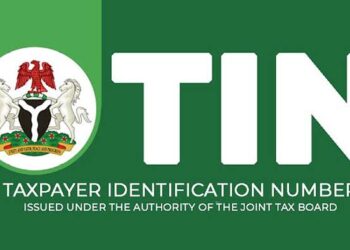Withholding Tax is often viewed erroneously as a separate form of tax. Withholding tax is basically an advance payment of income tax, rather than a separate form of tax itself. As the Federal Inland Revenue put it; “Withholding tax is not a separate type of tax but a payment on account of income tax and it is available as set-off against tax assessment of relevant period”.
A typical example is that you invoice your customer N1m for goods supplied. Rather than pay you N1m, your customer pays you N950,000, therefore withholding N50,000. The N50k withheld by your customer is now paid on your behalf to the tax man (FIRS). After payment to the FIRS he is issued a Withholding Tax Credit Note ( a receipt showing proof of payment). As a confirmation that your customer has paid the N50k on your behalf, you must obtain a copy of the Withholding Tax Credit Note from them. Without it you have basically just dashed the customer N50,000 of your money. So, it is either you are given the credit note or refunded your N50,000 cash. Because of the tendency of companies not to pass on withholding tax credit notes to suppliers or even remitting the amount to the FIRS, some suppliers tend to gross up their invoice.
How to gross up invoice?
As in the example above, for the supply that is worth N1m, they charge the customer anything slightly above 5% of your actual selling price. So, rather than invoice N1m you invoice N1,060,000 which is 6% more than your actual amount. What will follow, is that your customer will deduct 5% of the N1,060,000 thus paying you N1,007,000. Which is not below the N1m price. In fact it leaves you with a room to even give a discount of N7,000 if you wish.
What to do with the Withholding Tax Credit Note
At the end of the financial year, your withholding tax credit note will be gathered and presented to the tax man. It is expected that by then, he would have told you how much tax you are liable to pay for that year. I will use the scenarios below to illustrate how you can use the credit notes to offset your taxes.
Scenario 1 : That your tax liability is N1.5m and you have a Withholding Tax Credit Note of N1m?
Implication: You will now only have to pay to the tax man N500k (N1.5m – N1m). That is the N1.5m that is your tax liability less the N1m that you had already paid in advance during the course of the year as your customers deduct from your invoices. You must provide the receipts totaling N1m to claim this offset.
Scenario 2: That your tax liability is N600k and you have a Withholding Tax Credit Note of N1m?
Implication You will not pay the tax man any money because you had paid N1m in advance during the year which is N400k (N1,000,000 less N400,000) more than the amount you are liable for in the financial year. Meaning you indeed have to your credit a sum of N400k to receive from the tax man. However, the FIRS(Tax Man) does not pay you cash for the credit that is due, rather they carry it over to the next year and use it to reduce future tax liabilities. Thus, in the example above, the N400k will not be paid to you immediately but carried over to the next year.
Scenario 3. You do not have any tax liability?
Implication:You will only carry forward all the credit you have for subsequent deduction from future years when you have a tax liability. Meaning your N1m will simply be carried forward. You will not be refunded the N1m cash (which is what the guideline currently stipulates).
Summary
Withholding Tax is a very lucrative way for the tax man to ensure more people pay taxes. It is designed in such a way that every one is dragged into the tax net. It is collected by both the state and local governments. Companies registered as a Limited Liability Company will take their Withholding Tax Credit Note to the FIRS whilst companies registered as a Partnership or Sole Proprietorship will take their’s to the State Inland Revenue Service (In Lagos, it is the LIRS). Partnership and Sole Proprietorship are typically viewed as “Individuals” in the eye of the tax man. The following is a table showing various rates of Withholding Taxes.














.gif)







Indeed a wonderful mechanism for collecting tax in advance from Taxpayers.
Whats the Simple diffrence between Withholding Tax and VAT.
Hi,In simple terms Withholding Tax is an advance payment of tax. It is basically paying part of your income tax in advance. VAT is an indirect tax that you pay whenever you purchase certain good or services. Whilst you pay, you also help the government receive when people pay you for goods and services you sell as you charge them 5%.
This is very educative.
Please confirm if credit notes carried forward can elapsed due to excess credit notes over tax liabilities for few years
Ugo you are king!
Wao…I hv learnt a lot via this
This analysis of WHT to current CIT appears not to be what currently applies. What we have experienced is that the tax man will say we cannot use current WHT to offset the CIT of same period but only of prior years. So after statutory audit of say 2018 FY, the CIT comes to N1m and in same period there is WHT of N1.5m, what we have been experiencing is that we can only use WHT of 2017FY and before to offset the CIT for 2018. It will be great to have more clarity on this. Also, we often tend to forget the 2% Edu Tax as compulsory and it cant even be offset by WHT. It will also be great to shine some light on that.